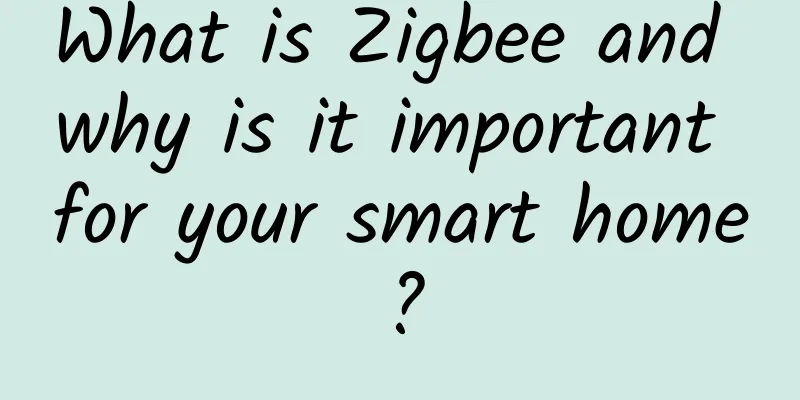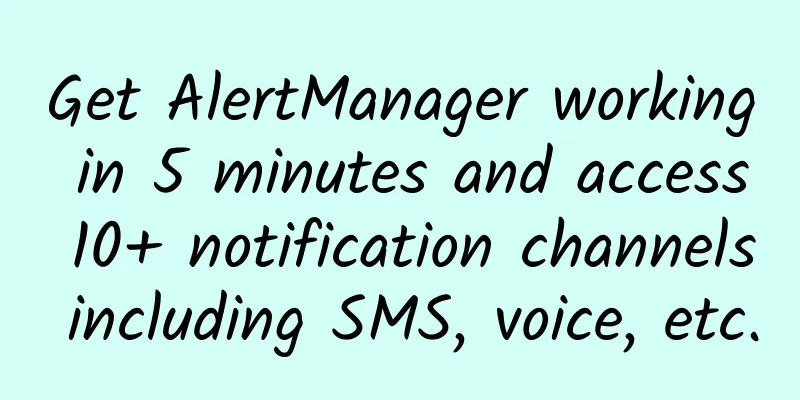What is Zigbee and why is it important for your smart home?

|
Zigbee is a widely used smart home protocol that’s even integrated into the Amazon Echo, so we need to know everything there is to know about it. Key points:
There has been an explosion of smart home devices over the past few years. What was once called "home automation" is now known as the "Internet of Things" and has become a friendlier category that we call the smart home. We have it all - heating, lighting, cameras, sensors, and new devices appear all the time to bring the home into the connected future. Over the past few years, we’ve moved from a world of disconnected systems to one with emerging hubs, big devices like the Amazon Echo and Nest Audio acting as hubs that tie all connected services together, and platforms like Apple HomeKit and Samsung SmartThings. The launch of the new Amazon Echo Hub shows that the battle to become the go-to smart home system is far from over. So, what role does Zigbee play in this brave new world of the smart home? Why Smart Homes Benefit from ZigbeeSmart homes are centered around integration. Essentially, everything is constantly communicating so people and devices are always up to date with what’s going on in the smart home. For example, lights “talking” to security cameras, or a smart coffee machine turning on when you get out of bed. The Internet of Things may be a rather useless term, but essentially, that’s what’s going on – everything is connected, which means information can be shared and lives can be controlled without having to access each thing individually. All of these connected devices are handled by the automation system over a single network. The result is a powerful smart home driven by apps and devices. However, for apps and devices to work together under a single network, a single common language must be used. This is where Zigbee comes in. What is Zigbee?Zigbee is based on the IEEE 802.15.4 personal area networking standard. If none of that makes any sense, Zigbee is a specification that has been around for more than a decade, and it’s widely considered a superior alternative to Wi-Fi and Bluetooth for some applications, including low-power devices that don’t require a lot of bandwidth — like smart home sensors. A classic example is when you have a Zigbee-enabled light bulb and a Zigbee-enabled light switch, and want the light switch to control the light bulb. With Zigbee, the two devices speak a common language, so there is no communication barrier, even if they are from different manufacturers. Zigbee isn’t as focused on point-to-point communication as Bluetooth, but it operates in a mesh network, which is why it’s perfect for a smart home. In fact, for customers building smart homes, devices supporting the Zigbee protocol may still be isolated, but as we move forward, as more and more devices want to act as a central controller, providing fewer wireless protocols for smart devices has obvious advantages, especially when a large number of hubs connected to the router can be avoided. Zigbee has been slightly disrupted by the emergence of Matter, a newer standard that aims to unify devices in the smart home and fulfill the role that Zigbee was originally intended to play. The company behind Zigbee has changed its name to the Connectivity Standards Alliance (CSA) and is pushing for the adoption of Matter, which has some technical advantages over the older Zigbee protocol. What is mesh networking and where did Zigbee come from?Mesh networking is when network connectivity is spread out between wireless nodes that can communicate with each other and share network connectivity over a large area. Think of nodes as small transmitters that function in the same way as wireless routers. Zigbee's ability to support mesh networking means that it can extend the range of data transmission and provide greater stability, even if a single connected node fails or is not working. With Zigbee, there may be a master coordinator node that controls the other connected nodes, such as the latest version of the Echo Show 10. If one node fails for some reason and cannot communicate with a second node on the mesh network, the master and second nodes can communicate by linking to a third node within range. Each node acts as a repeater of sorts, and all nodes cooperate in the distribution of data, hence the mesh network. Zigbee supports up to 65,000 nodes in a single network. All of this means that you can use smart home devices or sensors that are far away from the smart home hub without losing connectivity. Data is passed from one node to another, so as long as there are enough nodes, it is possible to communicate with devices on the other side of the smart home hub. What devices use Zigbee?Now that you know what Zigbee is, it's necessary to understand the devices that work with Zigbee. Just because you use this wireless networking standard doesn't mean that everything will work harmoniously. After all, there's a chance that no one control application knows what all these devices are. Here are some of the main users of Zigbee in smart homes:
However, just because a business uses the protocol doesn't mean it will work right away. Philips Hue uses Zigbee to connect its light bulbs, but that didn't always mean that additional bulbs from different manufacturers could be added. However, with devices like the Amazon Echo (4th Gen), the way Zigbee is handled changes because it's possible to have Alexa control all of these different types of devices without the need for a hub or app from each manufacturer. The Echo can be told to search for devices, for example, find a Philips Hue bulb and control it without any input from Philips at all. Amazon Echo devices, as well as Google Home or Apple HomeKit are interesting because they are all smart AI devices that can control more functions. For example, Echo can control Zigbee devices directly, but can also enable skills to control devices running on other standards, such as Ring Video Doorbell. The biggest question when using Zigbee is whether it will meet your needs, as there is also Wi-Fi connection and manufacturer-specific hubs, depending on what the individual wants to do and how to achieve it. The downside of using Zigbee control from third-party devices is the potential loss of functionality, such as Philips Hue, which has reduced control capabilities when not using Philips' app. Therefore, it is questionable whether you want to do this. One popular application for Zigbee is for smart sensors, small, low-power devices that monitor things like temperature or humidity in your home, or detect motion. They’re a good fit for Zigbee because the mesh networking capabilities mean they can run off battery power and still be able to communicate with a smart home hub on the other side of the house. Do all smart home hubs support Zigbee?The easiest way to control your smart home is through a smart home hub. This is a central device that communicates with all the smart home devices in your home and passes on commands. This means that there is no need to use eight different apps to turn off different brands of smart light bulbs in your home; one command from the smart home hub controls them all. However, not all smart home hubs can use Zigbee. For example, if you use an Echo Show 8 to control smart home devices, it does not have Zigbee built in, so you will not be able to control any Zigbee devices directly, although you can control them through a hub. Alternatively, you can use an Echo Show 8 to control Zigbee Philips Hue lights, provided you have a Philips Hue bridge to send Zigbee signals. Having a smart home hub with Zigbee built in is definitely the better option, as it opens up a world of Zigbee smart home devices that can be controlled directly without any additional hub. Amazon seems to be aware of this, as the Echo Show 10 does have Zigbee built in, as does the new Echo Hub, which is the first Echo device designed primarily for controlling a smart home. Other Zigbee-compatible smart home hubs include the Amazon Echo (4th Gen), Samsung SmartThings Station, and Aqara Smart Hub M2. What is the Zigbee Alliance?Since its founding in 2002, the Zigbee Alliance, which consists of hundreds of different companies using Zigbee technology, such as Amazon, Samsung and Ikea, was formed to maintain and publish the standard. However, since the formation of a more unified smart home standard Matter in 2021, the Zigbee Alliance has changed its name to the Connectivity Standards Alliance (CSA). The idea is that the CSA will basically do for Matter what the Zigbee Alliance did for Zigbee. However, Zigbee devices and Zigbee technology won’t disappear overnight as a result of this recent shift. Zigbee will likely continue to evolve alongside Matter, and it’s likely that a path to the new standard will be created over time. Zigbee and Matter cover many of the same ideas, and as Matter evolves, many manufacturers are looking for ways to build bridges between older Zigbee devices and the new Matter standard. Philips Hue, for example, is doing this by updating its Hub. |
<<: Demystifying gRPC: Unleashing Lightning-Speed Communication
>>: 5G Factory Takes Over the Next Step of "5G+Industrial Internet"
Recommend
Survey shows: SD-WAN deployment is growing rapidly, MPLS will not disappear
Recently, Cato Networks released a survey report ...
How 5G and edge computing are changing the game for online retailers
In today's ever-evolving retail world, stayin...
The basic concepts of Kafka producers, consumers, and brokers
Kafka is a publishing and subscription-based mess...
The operating data of the three major operators in 2018, how did they perform this year?
2018 has passed. This year was a year of hard wor...
How 5G precision timing will change our automated world
What comes to mind when you hear the word “automa...
Operators' 2G/3G network withdrawal may accelerate
As 4G coverage deepens and 5G commercial scope co...
Interpretation of the 8 major links of the Internet of Things industry chain in 2017
1. Composition of the IoT industry chain The Inte...
Explore VLAN aggregation: How to optimize your network performance
VLAN technology is widely used in campus networks...
How to manage millions of devices in the era of IoT? Look for Wind River DLM!
[51CTO.com original article] On August 22, the &q...
What is 6G and how close are we to its launch?
No, you read that correctly - 6G. Considering tha...
Teach you how to choose the most suitable wireless AP
With the popularization of the Internet and the w...
ExtraVM offers 30% off on Netherlands data center, 1Gbps unlimited traffic VPS starting at $3.5 per month
ExtraVM recently launched a new VPS host in the N...
In the new era, how can operators seize the opportunity of industrial Internet?
2020 is the year when 5G enters large-scale appli...
The use of 6GHz spectrum is hotly debated. The mainstream view is that it is most suitable for 5G.
At the 7th Asia-Pacific Spectrum Management Confe...
Cloud empowers new life and Wind River IoT genes are upgraded again
There is a wind power plant abroad that mainly us...









